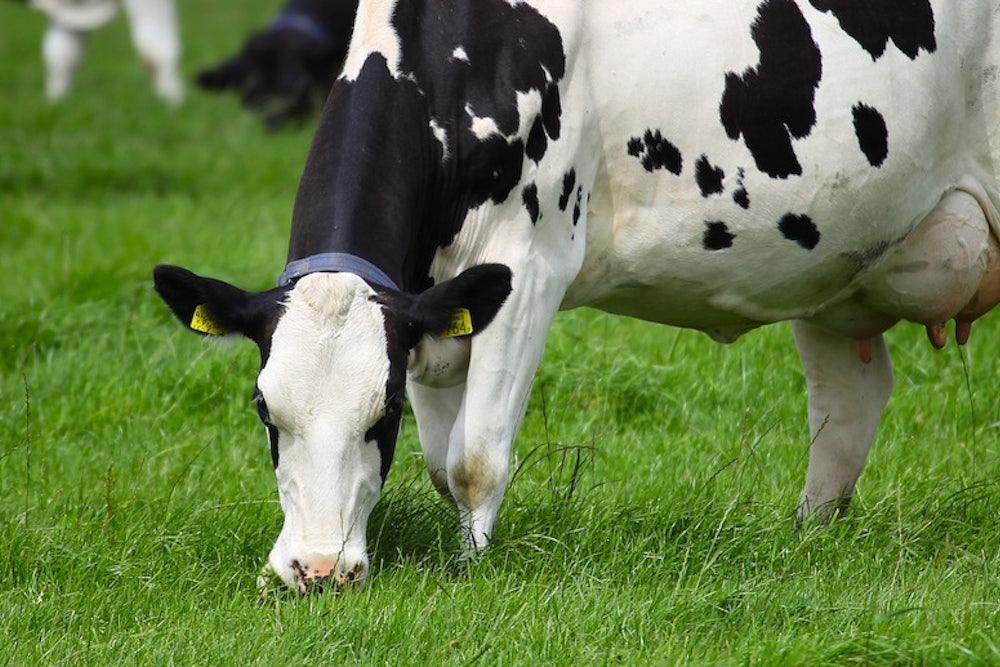The Environmental Protection Agency is still finalizing its major new regulations on carbon emissions from coal plants. But the Obama Administration is already thinking ahead to the next big step in its efforts to reduce greenhouse gas emissions: Doing something about methane. Yes, that means thinking about cow farts. But it mostly means dealing with other consequential sources of the gas. And a plan is taking shape.
Some background: Methane is a colorless, odorless gas. It accounts for just 9 percent of U.S. greenhouse gases, and it doesn't last in the atmosphere for as long as carbon dioxide does. But it is also about 34 times as potent as carbon over a hundred-year period and 86 times as potent over 20 years, according to the Intergovernmental Panel on Climate Change. That makes it the second-leading cause of heat-trapping emissions.
Methane occurs in nature, as bacteria and other tiny organisms break down organic matter. It existed in much, much higher levels early in the earth's history, then declined steeply as life spread. But industrialization has caused it to increase again, through a variety of human activities—and today, scientists believe, those activities are responsible for about 60 percent of the total methane in the atmosphere.

While there is some disagreement on just how much methane the different sectors each produce, the biggest source seems to be the energy sector, which heats homes, offices, and even some vehicles with natural gas.
You might have heard that natural gas is “cleaner” than coal. And there's a sense in which that's true. Natural gas burns cleaner than coal, emitting less carbon and air pollution. But before you can burn natural gas, you have to extract, refine, transport, and store it. (It's during this conversion to natural gas that energy companies artificially add the distinctive rotten smell, as a safety measure.) At any point in the production process, the gas—nearly 100 percent methane—can escape into the atmosphere.
Agriculture is the second-biggest producer of methane, because animals raised for dairy and meat foods relase methane in their manure, flatulence, and belches. The third source is landfills, where decomposing waste releases both methane and carbon. Other, still smaller sources of methane include the coal industry.
The Obama Administration has touted methane as a “bridge fuel,” to provide cheap, less hazardous energy as the world slows down coal consumption and switches to more renewables. Not everybody is so sanguine about its increasing use. Joe Romm, my former colleague at ThinkProgress, has called it foolish thinking to consider natural gas a clean source of fuel. World Resources Institute argued that leakage rates would need to be cut to less than 1 percent of total production—a one-half to two-thirds cut below current levels—in order to actually be cleaner than coal.
Still, the White House has already taken some action to reduce methane emissions—in landfills, agriculture, and coal, its other large sources. These include requiring coal production on public land to cut methane, as well as new and existing landfills to capture 13 percent more methane by 2023 by installing equipments. The Administration has also sought voluntary commitments from the dairy industry to cut emissions, achieved through methods like changing cows’ diets.
You'll notice what's not on that list: New regulations on the production and transport of natural gas. That's because, so far, regulations haven't kept pace with the production boom. Instead, the government is relying heavily on regulations from a time when natural gas was not so widely used. This has real and tangible costs: A report from the EPA Inspector General on Friday criticized both how the EPA fails to track methane leaks and that it's done too little to oversee growing natural gas infrastructure. Right now, pipeline repair for leaks occurs on a voluntary basis, with companies deciding when and where it’s necessary to fix leaks, without considering the environment. Meanwhile, a separate report from the Environmental Defense Fund and ICF International found that methane emissions from the oil and gas sector will rise 4.5 percent by 2018 at a time they need to be shrinking.
That same report suggested that industry can readily cut 40 percent of their methane emissions, just by using available technology. And there are financial arguments for why companies might want to do that: When they lose methane in the production and transport process, they lose potential revenue. Still, it's probably going to take a push to get the industry to do more.
And maybe that is about to happen. On Tuesday, the Obama administration’s Department of Energy announced a series of new initiatives that will target methane leaks from natural gas. Taken one at a time, they don’t sound like much: They include new initiatives, partnerships, and grants to control natural gas’ methane emissions, White House climate adviser Dan Utech told reporters. But they precede stronger actions yet to come. By the end of the year, Obama is expected to announce methane regulations on natural gas flaring and venting on public lands. The White House’s comprehensive methane strategy from March hinted that, before Obama leaves office, the EPA will look at possibly regulating natural gas production on private lands.
If the EPA’s planned carbon regulations for coal plants add up to the predicted 17 percent reduction by 2020—and there’s still doubt about that estimate—the U.S. still falls short of Obama’s 2009 pledge at Copenhagen to cut total greenhouse gas emissions significantly. The U.S. could get all the way to this goal by taking action on methane, too.
